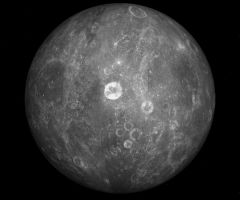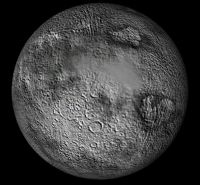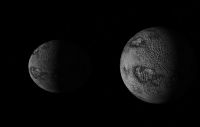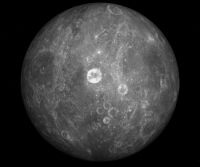Difference between revisions of "S/2000 (90) 1"
(Added link to 90 Antiope.) |
(Edited category.) |
||
| (3 intermediate revisions by the same user not shown) | |||
| Line 2: | Line 2: | ||
!bgcolor="lightsteelblue" colspan="2" align="center" |S/2000 (90) 1 | !bgcolor="lightsteelblue" colspan="2" align="center" |S/2000 (90) 1 | ||
|- | |- | ||
| − | |colspan="2" align="center"|[[Image:S2000901- | + | |colspan="2" align="center"|[[Image:S2000901-Antiopezip-Orbiter2003P2.jpg|240px]] |
|- | |- | ||
| − | |colspan="2" align="center"|'''S/2000 (90) 1 from '' | + | |colspan="2" align="center"|'''S/2000 (90) 1 from ''Antiope.zip'' in Orbiter 2002P3''' |
|- | |- | ||
!bgcolor="lightsteelblue" colspan="2"|Designation | !bgcolor="lightsteelblue" colspan="2"|Designation | ||
| Line 10: | Line 10: | ||
|Name||align="right"|S/2000 (90) 1 | |Name||align="right"|S/2000 (90) 1 | ||
|- | |- | ||
| − | |width="30%"|Reference body||align="right" width="30%"|[[ | + | |width="30%"|Reference body||align="right" width="30%"|[[Antiope]] |
|- | |- | ||
!bgcolor="lightsteelblue" colspan="2"|Planetary mean orbits | !bgcolor="lightsteelblue" colspan="2"|Planetary mean orbits | ||
| Line 16: | Line 16: | ||
|width="30%"|Epoch||align="right" width="50%"|2003.441 | |width="30%"|Epoch||align="right" width="50%"|2003.441 | ||
|- | |- | ||
| − | |width="30%"|Semimajor axis (a)||align="right" width="50%"| | + | |width="30%"|Semimajor axis (a)||align="right" width="50%"|85000 m |
|- | |- | ||
|width="30%"|Eccentricity (e)||align="right" width="30%"|0 | |width="30%"|Eccentricity (e)||align="right" width="30%"|0 | ||
| Line 26: | Line 26: | ||
|width="30%"|Longitude of periapsis (ϖ)||align="right" width="30%"|0° <br> (0 radian) | |width="30%"|Longitude of periapsis (ϖ)||align="right" width="30%"|0° <br> (0 radian) | ||
|- | |- | ||
| − | |width="30%"|Mean longitude (L)||align="right" width="30%"| | + | |width="30%"|Mean longitude (L)||align="right" width="30%"|180° <br> (3.141592653 radian) |
|- | |- | ||
!bgcolor="lightsteelblue" colspan="2"|Selected physical parameters | !bgcolor="lightsteelblue" colspan="2"|Selected physical parameters | ||
| Line 32: | Line 32: | ||
|width="30%"|Mean radius||align="right" width="30%"|42500 km | |width="30%"|Mean radius||align="right" width="30%"|42500 km | ||
|- | |- | ||
| − | |width="30%"|Mass||align="right" width="30%"| | + | |width="30%"|Mass||align="right" width="30%"|4.1×10<sup>3</sup> kg |
|- | |- | ||
!bgcolor="lightsteelblue" colspan="2"|Rotation elements | !bgcolor="lightsteelblue" colspan="2"|Rotation elements | ||
| Line 44: | Line 44: | ||
|width="30%"|LAN||align="right" width="30%"|0 | |width="30%"|LAN||align="right" width="30%"|0 | ||
|- | |- | ||
| − | |width="30%"|Note||align="right" width="30%"|*Elements given are from S2000 90 1.cfg ( | + | |width="30%"|Note||align="right" width="30%"|*Elements given are from S2000 90 1.cfg (Antiope.zip) |
|} | |} | ||
| − | + | '''90 Antiope'''is a double asteroid with [[S/2000 (90) 1]] in the main asteroid belt between [[Mars]] and [[Jupiter]], and was discovered on 1 October 1866 by [[w:Robert Luther|Robert Luther]]. The name comes from [[w:Greek mythology|Greek mythology]]. 90 Antiope was considered a single body until August 2000 when it was discovered to be two almost identical bodies, the mass differing by less than 2.5%. Antiope is now attributed to the larger body and the smaller body is desgnated as S/2000 (90) 1. | |
| − | == | + | == Antiope in Orbiter == |
| − | 90 Antiope was first introduced with the release of | + | '''90 Antiope''' was first introduced with the release of MainBeltAsteroids051403.zip in May 2003. Since Orbiter is not written for two bodies revolving about a gravity center, S/2000 (90) 1 is configured to revolve as a standard satellite about Antiope in this release. |
| − | + | In the release of ''Antiope.zip'' by ''Bluefrog'' in January 2003, 90 Antiope and S2000 90 1 were modeled to orbit around a common gravity center by creating a ficticious body "Antiope" with the solar orbital parameters of the twin body system as given in the table to the right, but, the fictitious body has a radius of 4.25 meters, mass of 10.325×10<sup>16</sup> kg, and was not given any visuals. 90 Antiope and S2000 90 1 were modeled as satellites of the fictitious body, orbiting each at 85000 km from Antiope each with the same mass, radius, and rotation periods. | |
| + | Sol.cfg is listed like this, 'Planet5' being whatever planet number you assign in your file:<br> | ||
| + | Planet5 = Antiope<br> | ||
| + | Antiope:Moon1 = 90 Antiope<br> | ||
| + | Antiope:Moon2 = S2000 90 1 | ||
| + | |||
| + | NOTICE TO PILOTS: The Antiope center body is invisible, but has a hard surface 4.25 meters in radius. Do be very careful when flying between the bodies as not to crash into Antiope. | ||
| + | |||
| + | Note that the landing surface of 90 Antiope as given in the config file is spherical, but the visual of these bodies are not, if you land, you will likely be above or below the visual surface. | ||
{| class="wikitable" style="text-align: center" | {| class="wikitable" style="text-align: center" | ||
|colspan="8"|<center>'''Orbiter versions and add-ons which include S/2000 (90) 1'''</center> | |colspan="8"|<center>'''Orbiter versions and add-ons which include S/2000 (90) 1'''</center> | ||
|- | |- | ||
!Add-on!!Source!!Version!!Author!!Type!!Release Date!!Compatibility!!Wiki article | !Add-on!!Source!!Version!!Author!!Type!!Release Date!!Compatibility!!Wiki article | ||
| + | |- | ||
| + | |[https://www.orbiter-forum.com/resources/antiope.3037/ Antiope]||O-F Resources||2004-01-24||Bluefrog||Scenery||24 January 2004|||| | ||
|- | |- | ||
|[https://www.orbiter-forum.com/resources/main-belt-asteroids-v1-0.1435/ Main Belt Asteroids v1.0]||O-F Resources||v1.0||Unknown OHM Addon Developer||Scenery||14 May 2003|||| | |[https://www.orbiter-forum.com/resources/main-belt-asteroids-v1-0.1435/ Main Belt Asteroids v1.0]||O-F Resources||v1.0||Unknown OHM Addon Developer||Scenery||14 May 2003|||| | ||
| Line 68: | Line 78: | ||
S2000901-MainBeltAsteroidszip.jpg|<center>S/2000 Z(90) 1 in Orbiter 2002P3 from ''MainBeltAsteroids051403.zip''</center> | S2000901-MainBeltAsteroidszip.jpg|<center>S/2000 Z(90) 1 in Orbiter 2002P3 from ''MainBeltAsteroids051403.zip''</center> | ||
90AntiopeS2000901-MainBeltAsteroidszip.jpg|<center>S/2000 (90) 1 (left) and 90 Antiope (right) in Orbiter 2002P3 from ''MainBeltAsteroids051403.zip''</center> | 90AntiopeS2000901-MainBeltAsteroidszip.jpg|<center>S/2000 (90) 1 (left) and 90 Antiope (right) in Orbiter 2002P3 from ''MainBeltAsteroids051403.zip''</center> | ||
| + | S2000901-Antiopezip-Orbiter2003P2.jpg|<center>S/2000 (90) 1 from ''Antiope.zip'' in Orbiter 2003P2</center> | ||
| + | 90Antiope-S2000901-Antiopezip-Orbiter2003P2.jpg|<center>90 Antiope (left) and S/2000 (90) 1 from (right) ''Antiope.zip'' in Orbiter 2003P2</center> | ||
The Antiope Doublet - Eso0718b.png|<center>[[w:Very Large Telescope|Very Large Telescope]] images of 90 Antiope and S/2000 (90) 1 in 2004</center> | The Antiope Doublet - Eso0718b.png|<center>[[w:Very Large Telescope|Very Large Telescope]] images of 90 Antiope and S/2000 (90) 1 in 2004</center> | ||
</gallery> | </gallery> | ||
| Line 76: | Line 88: | ||
[[Category:Articles|S/2000 (90) 1]] | [[Category:Articles|S/2000 (90) 1]] | ||
| + | [[Category:Celestial bodies|S/2000 (90) 1]] | ||
[[Category:Solar System|S/2000 (90) 1]] | [[Category:Solar System|S/2000 (90) 1]] | ||
| − | |||
[[Category:Main Belt Asteroids|S/2000 (90) 1]] | [[Category:Main Belt Asteroids|S/2000 (90) 1]] | ||
Latest revision as of 11:50, 12 September 2024
| S/2000 (90) 1 | |
|---|---|

| |
| S/2000 (90) 1 from Antiope.zip in Orbiter 2002P3 | |
| Designation | |
| Name | S/2000 (90) 1 |
| Reference body | Antiope |
| Planetary mean orbits | |
| Epoch | 2003.441 |
| Semimajor axis (a) | 85000 m |
| Eccentricity (e) | 0 |
| Inclination (i) | 0° (0 radian) |
| Longitude of the ascending node (LAN, ☊) | 0° (0 radian) |
| Longitude of periapsis (ϖ) | 0° (0 radian) |
| Mean longitude (L) | 180° (3.141592653 radian) |
| Selected physical parameters | |
| Mean radius | 42500 km |
| Mass | 4.1×103 kg |
| Rotation elements | |
| SidRotPeriod | 59432 seconds (16.509 hours) |
| SidRotOffset | 0 |
| Obliqutiy | 0 |
| LAN | 0 |
| Note | *Elements given are from S2000 90 1.cfg (Antiope.zip) |
90 Antiopeis a double asteroid with S/2000 (90) 1 in the main asteroid belt between Mars and Jupiter, and was discovered on 1 October 1866 by Robert Luther. The name comes from Greek mythology. 90 Antiope was considered a single body until August 2000 when it was discovered to be two almost identical bodies, the mass differing by less than 2.5%. Antiope is now attributed to the larger body and the smaller body is desgnated as S/2000 (90) 1.
Antiope in Orbiter[edit]
90 Antiope was first introduced with the release of MainBeltAsteroids051403.zip in May 2003. Since Orbiter is not written for two bodies revolving about a gravity center, S/2000 (90) 1 is configured to revolve as a standard satellite about Antiope in this release.
In the release of Antiope.zip by Bluefrog in January 2003, 90 Antiope and S2000 90 1 were modeled to orbit around a common gravity center by creating a ficticious body "Antiope" with the solar orbital parameters of the twin body system as given in the table to the right, but, the fictitious body has a radius of 4.25 meters, mass of 10.325×1016 kg, and was not given any visuals. 90 Antiope and S2000 90 1 were modeled as satellites of the fictitious body, orbiting each at 85000 km from Antiope each with the same mass, radius, and rotation periods.
Sol.cfg is listed like this, 'Planet5' being whatever planet number you assign in your file:
Planet5 = Antiope
Antiope:Moon1 = 90 Antiope
Antiope:Moon2 = S2000 90 1
NOTICE TO PILOTS: The Antiope center body is invisible, but has a hard surface 4.25 meters in radius. Do be very careful when flying between the bodies as not to crash into Antiope.
Note that the landing surface of 90 Antiope as given in the config file is spherical, but the visual of these bodies are not, if you land, you will likely be above or below the visual surface.
| Add-on | Source | Version | Author | Type | Release Date | Compatibility | Wiki article |
|---|---|---|---|---|---|---|---|
| Antiope | O-F Resources | 2004-01-24 | Bluefrog | Scenery | 24 January 2004 | ||
| Main Belt Asteroids v1.0 | O-F Resources | v1.0 | Unknown OHM Addon Developer | Scenery | 14 May 2003 | ||
See also[edit]
90 Antiope and S/2000 (90) 1 at Wikipedia
Gallery[edit]
Very Large Telescope images of 90 Antiope and S/2000 (90) 1 in 2004
| edit The Solar System | |
|---|---|
| Central star |
Sun (Sol) |
| Planets |
Mercury - Venus - Earth - Mars - Jupiter - Saturn - Uranus - Neptune |
| Natural satellites |
Moon - Phobos - Deimos - Io - Europa - Ganymede - Titan - more... |
| Add-ons |
Planets - Dwarf Planets - Small objects - Natural satellites - Alternative star systems |




